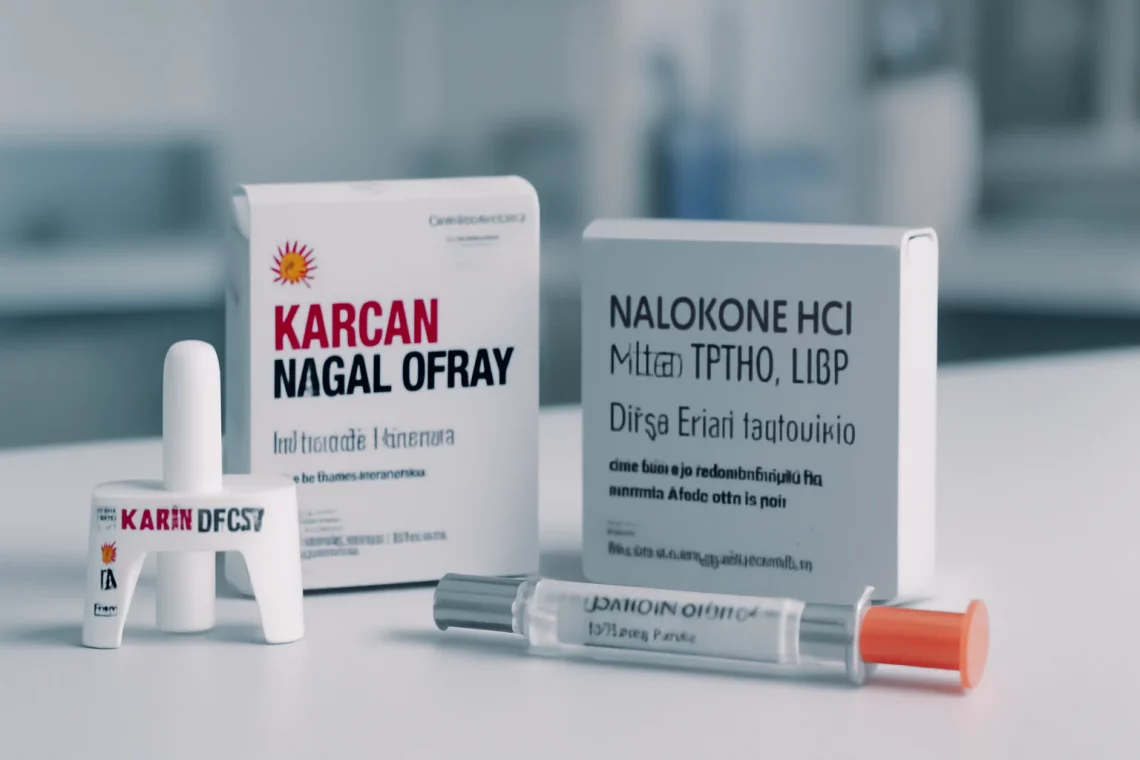
Narcan vs Naloxone: Understanding the Key Differences and Uses
The opioid crisis has become a significant public health concern, affecting millions worldwide. As the rates of opioid overdoses continue to rise, the need for effective intervention methods has never been more critical. Among the tools developed to combat this crisis, Narcan and naloxone have gained widespread attention and use. Both are essential in reversing the effects of opioid overdoses, but many people may not understand the nuances between the two.
Narcan is a brand name for the generic medication naloxone, which is an opioid antagonist. When administered, naloxone can rapidly restore normal breathing in someone experiencing an opioid overdose, effectively saving lives. The public health community has increasingly advocated for the widespread availability of Narcan, leading to its distribution in various settings, including pharmacies and community organizations. This movement reflects a growing recognition that timely access to naloxone can be a game-changer in emergency situations.
As discussions about Narcan and naloxone proliferate, it’s essential to clarify their distinctions, applications, and the importance of education around their use. Understanding these medications can empower individuals and communities to act swiftly in emergencies, ultimately contributing to a more informed public health response to the opioid epidemic.
Understanding Naloxone: The Active Ingredient
Naloxone is a powerful medication used primarily to counteract the effects of opioid overdose. It works by binding to the same receptors in the brain that opioids target, effectively displacing them and reversing the overdose effects. This mechanism is crucial in emergency situations, as it can quickly restore normal respiratory function in individuals who have consumed a potentially fatal dose of opioids.
One of the main benefits of naloxone is its safety profile. It is non-addictive and has no psychoactive effects, meaning it will not produce a high or other euphoric effects associated with opioid use. This makes naloxone an ideal candidate for widespread distribution and use in various settings, as it can be administered by anyone, including friends, family members, and bystanders, without the fear of causing harm.
Naloxone is available in several forms, including injectable solutions and nasal sprays. The injectable form requires a syringe and can be administered intramuscularly or intravenously, while the nasal spray offers a more accessible option for non-medical personnel. This variety of delivery methods enhances naloxone’s usability in emergency situations, ensuring that more people have the means to respond to an overdose effectively.
Despite its effectiveness, there are challenges associated with naloxone’s use. One significant issue is the stigma surrounding opioid use and addiction, which can deter individuals from seeking help or carrying naloxone. Additionally, while naloxone can reverse the immediate effects of an overdose, it does not address the underlying issues of addiction. As such, it should be viewed as a temporary measure rather than a long-term solution.
Public health initiatives have increasingly focused on educating communities about naloxone, emphasizing its life-saving potential. Training programs, distribution events, and awareness campaigns aim to demystify naloxone and encourage its use among those at risk of opioid overdose and their loved ones.
Narcan: A Brand Name for Naloxone
Narcan, the brand name for naloxone, has become synonymous with opioid overdose reversal. Developed with a focus on ease of use and accessibility, Narcan has been widely promoted as a vital tool in combating the opioid crisis. The brand has gained recognition not only among healthcare professionals but also among the general public, particularly in regions heavily affected by opioid addiction.
One of the key features of Narcan is its formulation as a nasal spray, which simplifies the administration process. Unlike injectable forms of naloxone, which may require training and equipment, Narcan’s nasal spray can be administered quickly and effectively without the need for needles. This feature has contributed to its popularity, as it allows individuals with no medical background to respond to an overdose promptly.
The marketing and distribution of Narcan have been bolstered by various public health campaigns. Many organizations have worked tirelessly to ensure that Narcan is available in pharmacies, community centers, and even schools. These efforts reflect a broader initiative to normalize the presence of naloxone in everyday life, akin to having an AED (Automated External Defibrillator) available for cardiac emergencies.
Despite the advantages of Narcan, it is essential to recognize that it is one part of a larger strategy to address opioid addiction. While it can save lives in the moment, it does not substitute for comprehensive treatment programs and support systems for individuals struggling with substance use disorders. Thus, while Narcan is a critical tool, it must be accompanied by broader efforts to educate, treat, and support individuals affected by opioid addiction.
Public awareness campaigns emphasizing the importance of carrying Narcan can lead to increased acceptance and utilization. The more people understand how to recognize an overdose and how to administer Narcan, the more lives can potentially be saved. This proactive approach is crucial in communities grappling with the ramifications of the opioid crisis.
Comparing Narcan and Naloxone: Key Differences
While Narcan and naloxone refer to the same medication, understanding the terminology and context can clarify their use. The crucial distinction lies in the branding: Narcan is a well-known brand name of naloxone. This distinction is significant, particularly in discussions surrounding public health initiatives and medication distribution.
The availability of Narcan as a brand name product has helped to destigmatize naloxone, making it more recognizable to the public. As a result, many people may feel more comfortable asking for Narcan at a pharmacy than they would for naloxone. This branding strategy has played a crucial role in promoting awareness and encouraging individuals to carry and use the medication.
In terms of effectiveness, both Narcan and naloxone have the same active ingredient and function in the same way. Therefore, there is no difference in their life-saving capabilities. The choice between the two often comes down to personal preference, cost, and availability. Some individuals may opt for Narcan due to its brand recognition or specific delivery method, while others may choose generic naloxone for cost-effectiveness.
It is essential for those at risk of opioid overdose and their loved ones to understand that both Narcan and naloxone serve the same purpose and can be lifesaving. Educational efforts should focus on the importance of having access to either version and knowing how to use it effectively in an emergency.
Additionally, as communities continue to address the opioid epidemic, the conversation surrounding Narcan and naloxone must also include discussions about addiction treatment, harm reduction strategies, and support systems. Recognizing that naloxone is a critical tool in the fight against opioid overdose is essential, but it should not overshadow the need for comprehensive addiction services and support.
Access and Education: The Future of Narcan and Naloxone
As the opioid crisis continues to evolve, access to Narcan and naloxone remains a priority for public health initiatives. Efforts to widen access have included legislation to allow pharmacies to dispense naloxone without a prescription and community programs that provide training and distribution of the medication. This proactive approach aims to ensure that anyone at risk of an opioid overdose or those close to them can have ready access to these life-saving tools.
Education plays a pivotal role in the success of these initiatives. Public awareness campaigns that inform communities about recognizing overdose signs, understanding how to use naloxone, and knowing where to obtain it are critical components of a comprehensive strategy. These efforts help to reduce stigma and empower individuals to take action in emergency situations.
Moreover, integrating naloxone education into schools, workplaces, and community centers can further normalize its presence and use. By making naloxone training a standard part of health education, communities can foster an environment where individuals feel confident in their ability to respond to an opioid overdose effectively.
The future of Narcan and naloxone hinges not only on access and education but also on ongoing research and development. As the landscape of substance use evolves, new formulations, delivery methods, and combinations with other treatment options may emerge, enhancing the effectiveness of overdose prevention strategies.
In conclusion, Narcan and naloxone are vital tools in addressing the opioid crisis, and understanding their roles is crucial for effective public health responses. By prioritizing access and education, communities can save lives and contribute to a broader effort to combat the devastating effects of opioid addiction.
*This article is not intended as medical advice. For health issues, always consult with a qualified healthcare provider.*




